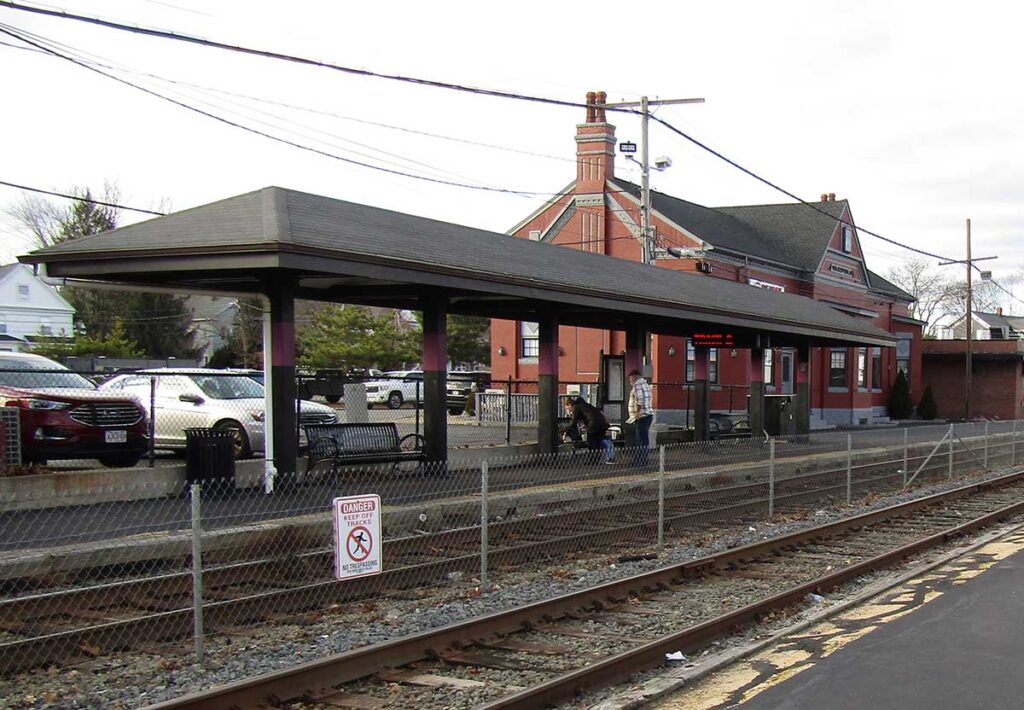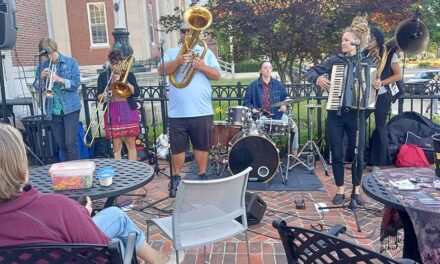By MARK SARDELLA
WAKEFIELD — The Planning Board and its Working Group that developed the new MBTA multifamily zoning compliance plan for Wakefield got an earful Monday night from a couple of Town Councilors who pointed out that the plan goes well beyond the state requirements, allowing more housing density in a larger district than mandated by the state.
The Town Council this week referred the proposed new MBTA multifamily zoning compliance plan to the Planning Board to conduct formal public hearings. But in the process, the Planning Board and the Working Group were quizzed as to why, in the face of vocal opposition from local residents, they backed a plan that exceeds state requirements.
In 2020, the Massachusetts Zoning Act (Section 3A of Massachusetts General Laws Chapter 40A) was amended to promote the production of multi-family housing within walking distance of public transportation to address a “severe regional housing shortage.” The state claims that there is a shortage of up to 200,000 housing units.
“Multi-family housing near transit creates walkable neighborhoods with climate and transportation benefits,” according to the Executive Office of Housing and Livable Communities, “including better access to work/services, increased utilization of public transit and reduced reliance on single-occupancy vehicles.”
The new Zoning Act requires all MBTA communities, including Wakefield, to create at least one multi-family zoning district of reasonable size near public transit in which multi-family housing is permitted as of right. “As of right” means that a developer may proceed without obtaining a Special Permit, variance, zoning amendment, waiver, or other zoning approval. In the proposed district, the plan would allow up to four units in a three-story building with a height of up to 35 feet on a minimum lot size of 4,000 square feet.
Towns that don’t comply with the state mandate face penalties including loss of state grant opportunities.

A NEW proposed multifamily zoning district would center around the North Avenue commuter rail station and the downtown. The plan was discussed at this week’s Town Council meeting. (Mark Sardella Photo)
But the compliance plan devised by Wakefield’s “MBTA Communities Working Group” has been criticized for allowing even more new multifamily housing density than what is required by the state. The district created by the Working Group is centered around the North Avenue commuter rail station and the downtown business district. For Wakefield, the minimum size required for this new multi-family zoning district would be 114 acres, but the Working Group is proposing a multi-family zoning district of 145.5 acres – far exceeding state requirements.
The state mandate would require Wakefield to allow up to 1,696 new units of multifamily housing. But the Planning Board is backing a plan that would allow 2,359 new housing units – nearly 700 more units than the state mandate requires.
At the Town Council meeting this week, Planning Board Chairman Theo Noell said that the Planning Board listened to resident concerns at three public forums last fall but felt that their more expansive plan was best for the town in terms of guiding development.
Town Councilor Michael McLane quizzed Noell and Working Group Chairman Jim Hogan regarding how the rules for driveways, setbacks and buffer zones would work, suggesting that they could result in even more lots qualifying for redevelopment under the plan than would otherwise.
Councilor Edward Dombroski pointed out that at the three public forums held by the Planning Board last fall, the vast majority of participants voiced strong opposition to the plan developed by the Working Group, favoring instead a minimum compliance model. Yet, he saw no inclination on the part of the planners to modify their model in response to the public input.
Hogan said that the Working Group and the Planning Board did hear the public opposition but felt that the plan they designed represented “good planning” for the town.
Dombroski said that he was concerned that the unwillingness of the Planning Board and Working Group to take opposing views seriously would have a “chilling effect” on their upcoming public hearings on the plan.
“I can’t imagine that will inspire more people to speak up,” he said.
Noell suggested that much of the opposition expressed at the previous forums stemmed from local residents perceiving the state mandate as “overreach.”
But Dombroski disputed Noell’s representation, pointing out that most of those who spoke at the forums weren’t railing against the state mandate but rather were questioning why the town was doing more than the mandate requires.
Noell also asserted that much of the opposition related to fears of increased traffic congestion from added housing. He also suggested that people didn’t understand that the plan would benefit local businesses by creating more housing near the downtown business district.
McLane told Noell that the people did understand but wanted the town to do the minimum to comply with the law.
“I am opposed to doing more than the minimum,” McLane said. He also noted that at one of those earlier forums, at least one Planning Board member made clear his displeasure with public opposition to the plan.
The Town Council’s procedural vote was unanimous to refer the multifamily zoning plan to the Planning Board for a pair of upcoming public hearings.





